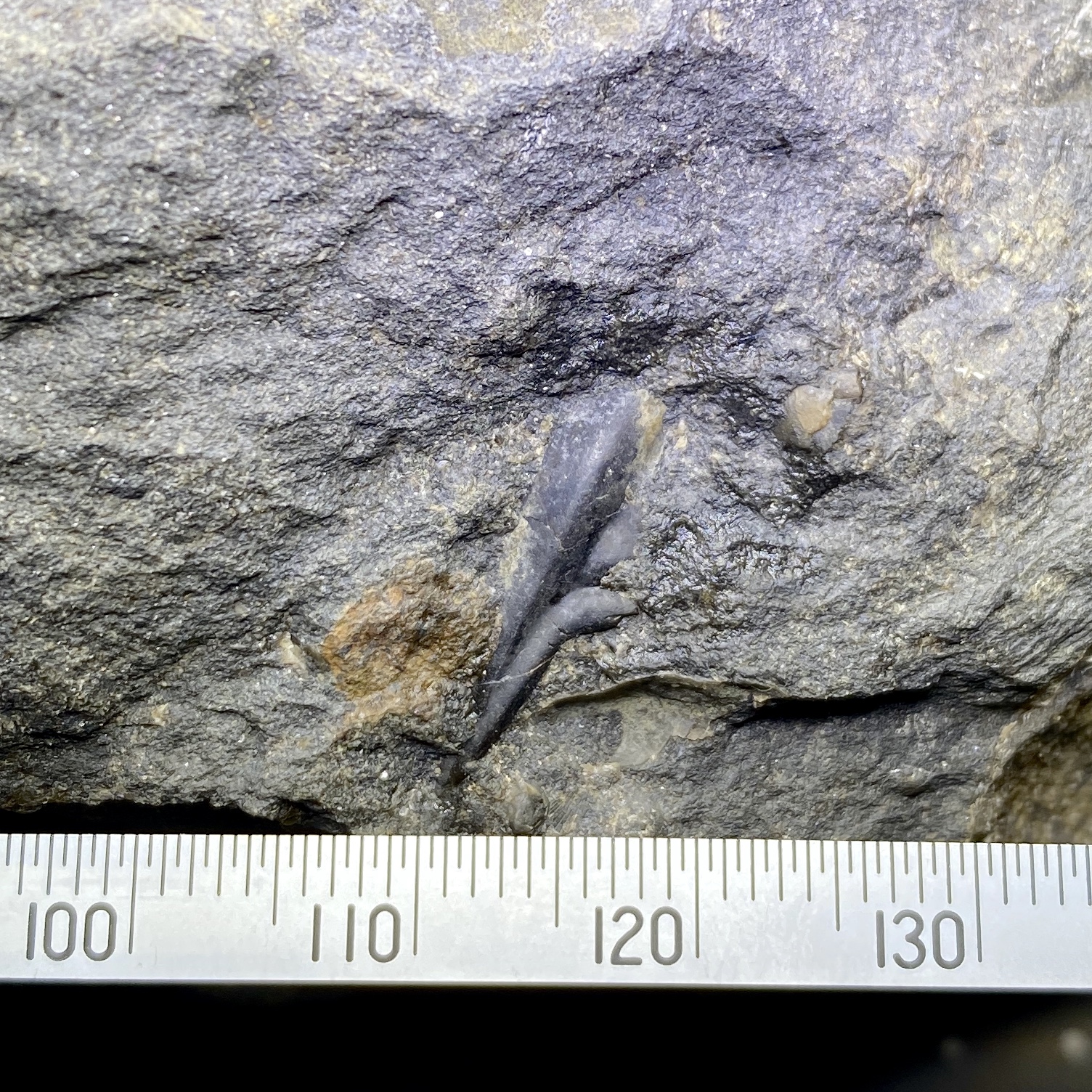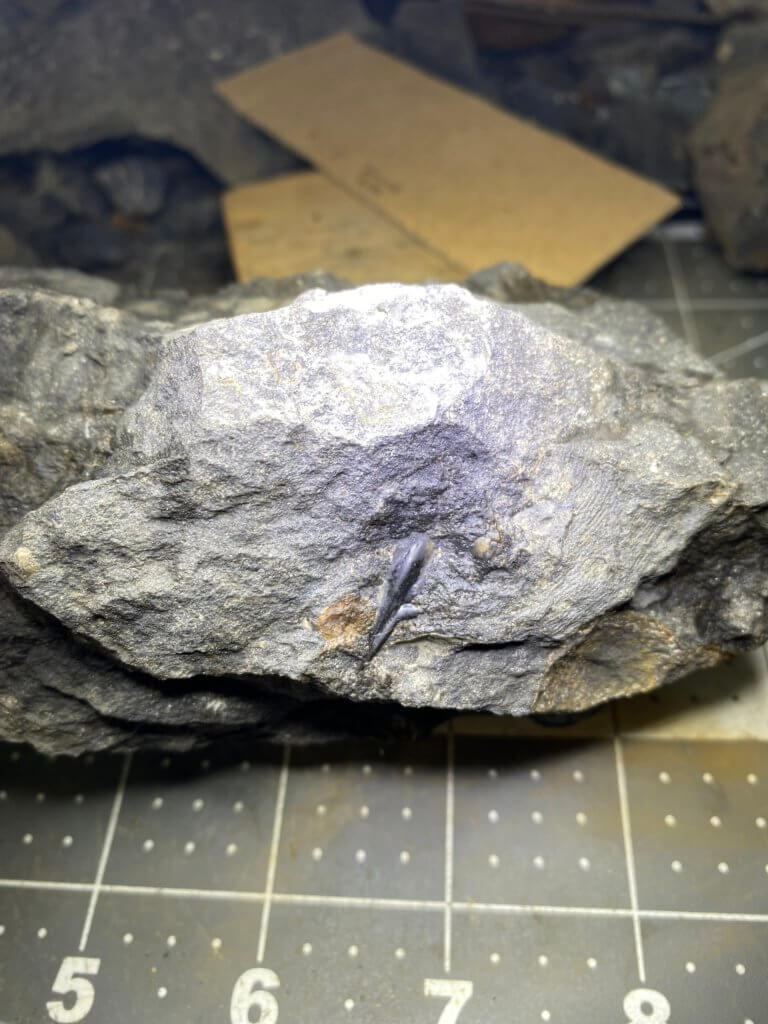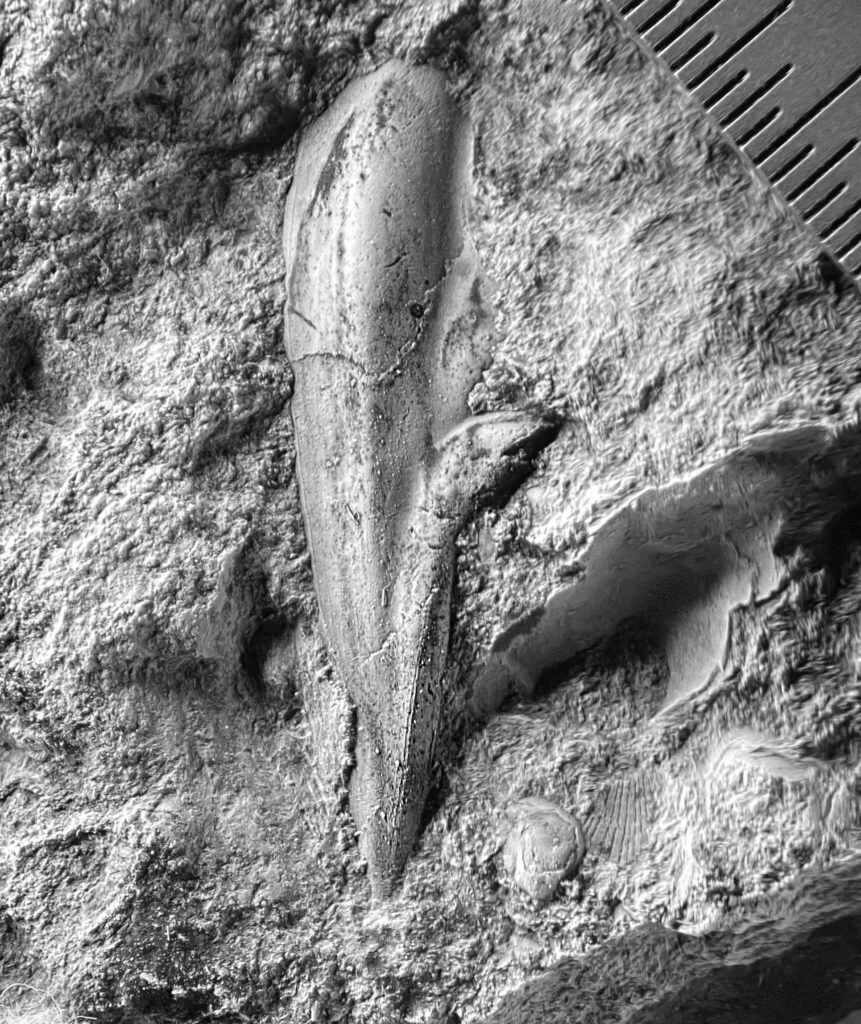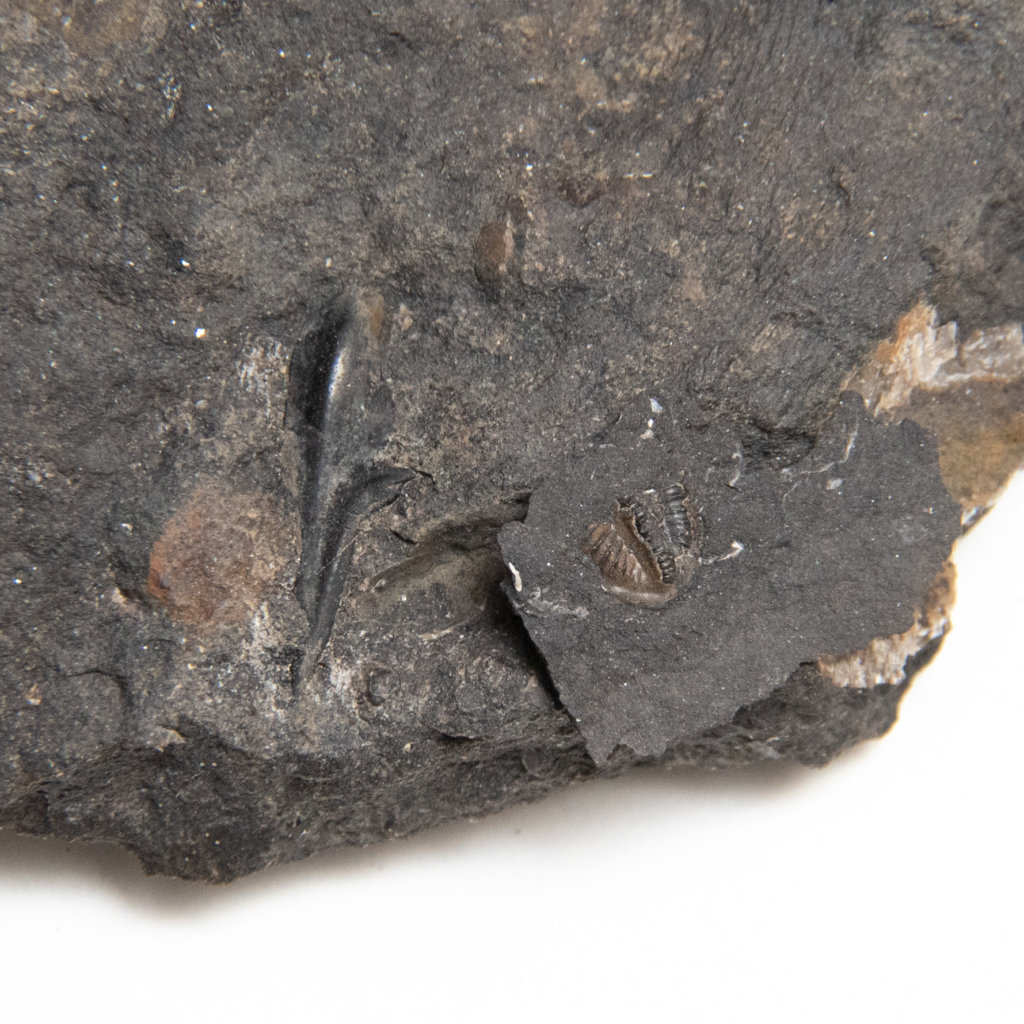Catalog Number: CG-0094
So far I’ve only collected Pygidium parts and perhaps a Thorax piece from local fossil trilobites. Yesterday August 6th, 2020, I found my first confirmed portion of what I’m fairly sure is the Free Cheek of a local Trilobite. These are held together tightly during life, and easily become dislodged after death. They are also pieces that detach during Trilobite molting. The three pieces dislodge to allow the creature to escape its old exoskeleton.
This comes from one of two possible local species, either Ameura missouriensis (Shumard) or Ditomopyge scitula (Meek & Worthen). A pygidium was also found within a few centimeters of this specimen, which I plan on photographing and adding to this post in the future. I did not find any other distinct pieces in the same rock, so they may be from the same creature.
General Trilobite Anatomy
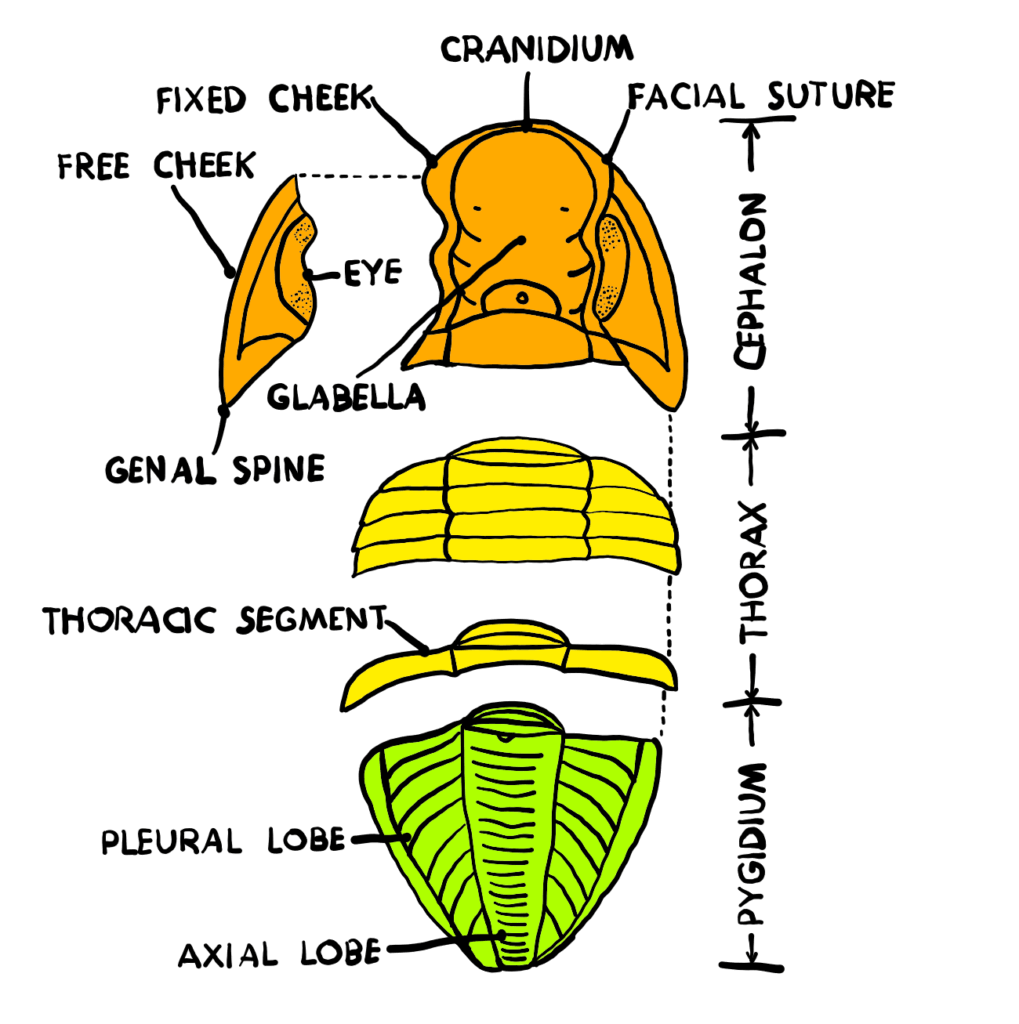
Free Cheek Photos with Scale
Additional photos below with metric scale. Interesting was how bright the specimen was when first freed. It looked like brand new plastic or glass. Upon interaction with oxygen and the environment, I suspect it gets duller. This happens often with fossilized remains locally where a portion of the shell or exoskeleton is preserved, locked in rock.
References
- Gon, S.M. III, Trilobite Facial Sutures, A Guide to the Orders of Trilobites
- Gon, S.M. III, Order Proetida, A Guide to the Orders of Trilobites

